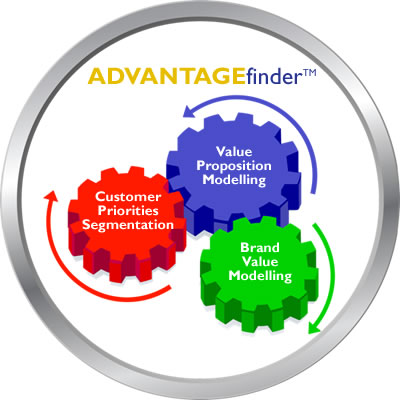Keith Sentis, Ph.D.
Managing Partner
Keith Sentis has spoken and published widely on topics including market segmentation, emotion in advertising, human memory processes, computer circuits, perceptions of fairness and estimation of choice model parameters. He holds an M.A. and Ph.D. in Psychology from the University of Michigan and a B.A. in Psychology with Highest Honours from the University of California at Santa Barbara where he received the department award for Research Promise in Psychology.
His book with Professor Jerry Olson is entitled “Advertising and Consumer Psychology”.
Away from the office, Keith enjoys music, noodling around with technology, mountain biking and the beach.
Valerie Geller, Ph.D.
Partner
Valerie Geller has extensive management experience including consulting, strategic planning, venture development in banking and technology planning, development, implementation and research in telecommunications. She holds an M.S. and Ph.D. in Psychology from Columbia University in New York. Her undergraduate degree is a Bachelor of Science, Magna cum laude, Phi Beta Kappa from the City University of New York. Valerie has served as Reviewer for the National Institute of Health, the National Institute of Mental Health and the National Science Foundation in the US. She has taught at Rutgers University and lectured at Fordham University Business School and has spoken and published on a wide range of both business and scientific topics.
In her spare time, Valerie is a balletomane, an avid potter and has had her photography exhibited in solo shows.
Value Proposition Modelling
This set of tools assists in optimising your value proposition. Our VPM tools help you identify which combination of brand, features and pricing will perform best in the marketplace. We model how changes to your value proposition will increase your sales.
Using our advanced choice modelling, preference modelling and conjoint methodologies, we assist you in ensuring that your new products are configured with the optimal combination of branding, features, benefits, pricing and packaging for the appropriate usage occasions.
The "what-if" scenarios in our market modelling are invaluable to our clients in determining the best product/service configuration, pricing, and range of products/services in the portfolio, as well as the market share impacts of likely competitor responses. Our what-if tools also can be constructed to identify the most profitable product or portfolio of products for your company.
Case Studies
-
Beer: The client wished to identify the bundle of brand, benefit, packaging and price that would optimise its new entrant into the fastest growing market segment.
Our Value Proposition Modelling identified the optimal new entrant from among its stable of brands and led to the most successful launch ever by the major Australian brewer.
-
B2B Services: To meet its sales goals, the client wished to learn if it was necessary to match the entire bundle of services that had been introduced by its major competitor.
Our Value Proposition Modelling for the B2B franchised service provider showed that a 56% increase in sales can be achieved with limited subset of new services, thereby providing the client with a considerably more cost effective offering.
-
Chocolate: With current promotional prices proving to be unsustainable, the client was searching for a combination of new package size and price structure that would optimise the profitability of its portfolio of brands.
Our Value Proposition Modelling for the multinational food manufacturer identified two new pack/price combinations that would achieve greater market shares than the current packs/prices and provide an avenue to greater profitability.
Customer Priorities Segmentation
Our segmentation methods identify groups of customers with different priorities. Because these segments have different priorities, they respond positively to distinctive value propositions. We model which value proposition will most increase your sales among each customer priorities segment.
Priorities-based segmentations are far more actionable than those based on attitudinal or demographic indices.
Case Studies
-
Banking: The client, with a very broad customer base, wished to increase its share of wallet by identifying specific financial priorities among its customers and focusing its products and marketing around thos priorities.
Our Customer Priorities Segmentation for the major Australian bank identified $200 million in revenue opportunities among customer segments with different financial priorities.
-
Salty Snacks: The client wished to line-extend its strongest brand into a new market subcategory while maintaining its dominance in the mainstream market category.
Our Customer Priorities Segmentation for the multinational food manufacturer identified the optimal line extension for their big brand, which was voted Product of the Year, while sales of the mainstream variants continued to grow.
-
Professional Services: The client had a wide range of services that catered to a varied group of users and wished to understand the priorities of those users so as to focus its marketing and redevelop its website.
Our Customer Priorities Segmentation for the largest organisation in the category identified several distinct groups of users and defined a successful strategy for new product development and for restructuring the organisation's website.
Brand Value Modelling
"Brand" is often the single strongest choice driver in our Value Proposition Modelling work, a finding that is consistent with the amount of resources that organisations devote to building and maintaining their brands. We have 30 years of experience in measuring what a brand means to customers. Our Brand Value Modelling tools identify which elements of your brand's image add the value to the customer experience and what ought to be done to increase that value.
Using hierarchical Bayesian techniques, we model the impact of the brand image elements on the value of the brand. We use this model to gauge how much the value-add of your brand will increase when its brand image is strengthened is specific areas. We then model the expected increase in sales resulting from strengthening the brand among current users and potential users.
With this modelling, clients evaluate the cost-benefit ratio for brand strengthening activities compared to other potential market place initiatives, such as introducing other features into the value proposition or reducing the price.
Case Studies
-
Beverages:
The client with the category leading brand was facing a new low-priced category entrant and wished to evaluate alternative ways to compete effectively against the newcomer aside from matching the lower price. The client asked whether they could strengthen their brand enough to compete effectively against the lower-priced new competitor or whether it was necessary to lower their price.
Our Brand Value Modelling for the multinational beverage manufacturer showed that strengthening their brand image in specific areas would increase sales by 33%.
The modelling showed that strengthening their brand would yield a greater increase in sales than the discounted pricing structure. Since investing in their brand assets would have residual value while discounting would not, the pricing decisions were straightforward.
-
Financial Services:
The client had the largest share in several service categories and wanted to determine an optimal market communication strategy to ensure its continued growth. Our Brand Value Modelling defined the key brand image elements to be strengthened, how these elements required different emphasis for specific target audiences and how these elements could be combined into optimal communication themes. The shift in marcoms strategy contributed to increases in market share.
We have worked with a wide range of clients around the world. Another sample of their logos is shown below.









